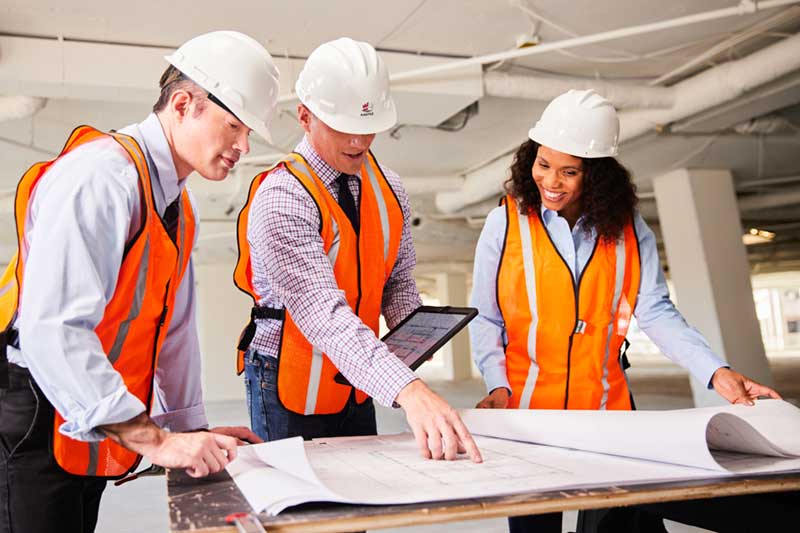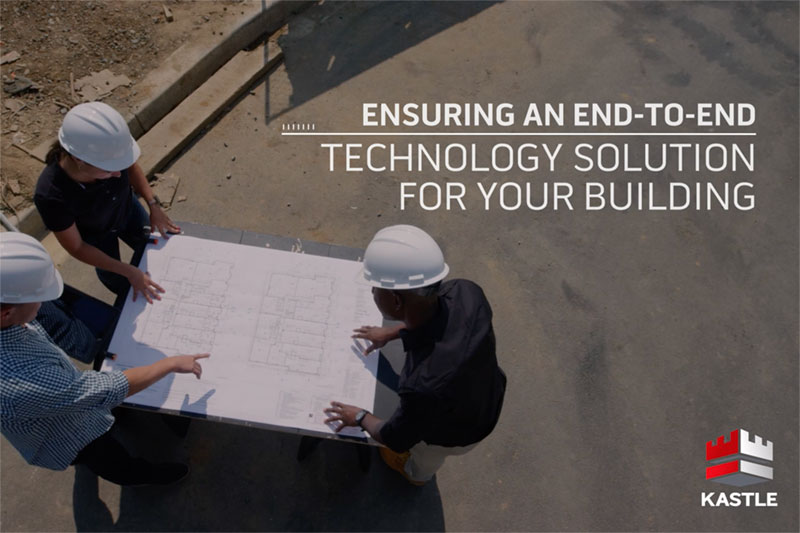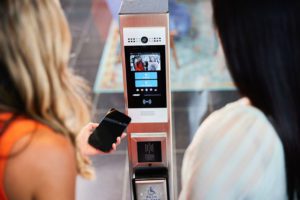Residents of today’s multifamily dwellings and workers in modern office buildings demand the same tech-forward amenities that they enjoy on their smartphones, in their cars, and in smart city environments. Simultaneously, to increase efficiency and generate cost savings, building owners and operators seek to provide the streamlined, data-rich operational performance that modern property technology can provide.
To deliver these outcomes, developers are increasingly incorporating property technology as a strategic component of new development operations, included as part of each project’s core infrastructure. They are creating buildings that combine smart amenities, automation solutions, and property management into one integrated system.
Access privileges are foundational to this system and to the tenant experience. While it is possible to create these conditions to some degree in existing buildings, an even higher level can be achieved when the infrastructure component is taken into consideration during the design phase, along with HVAC and mechanical, electrical, and plumbing (MEP).
Access technology is so interconnected with the other operating infrastructure systems of modern smart buildings that it must be included in the design phase. Tech-forward-thinking companies like Kastle work with relevant parties from design to installation to ensure the technology is ready to meet owners’ and tenants’ needs. As a result, elements like smart elevators, access control, and automated lighting can be connected in place, on time, and in peak performance. This process enables the integration of building operations that provide long-term property functionality:
- Efficient management systems. The integrated approach enables higher performance building operations that lower operating costs and free up management resources.
- Unparalleled tenant experience. With access wiring, readers, and sensors integrated into other building operations and systems, tenants get to enjoy the seamless convenience of state-of-the art smart buildings.
- Ability to meet tech-savvy tenant expectations. Spaces with integrated technology like superior Wi-Fi, touchless mobile access, smartphone-based delivery, visitor management, and other app-based conveniences fulfill the tech-forward experience that Millennial and Gen Z tenants demand.
In the following sections, we examine specific aspects of this technology that can be deployed when integrated into building design, rather than installed after construction:
Smart building integrations
The earlier a technology provider can be involved in a construction project, the more easily and inexpensively smart building features can be integrated. For example, stated Tom O’Donnell, Vice President and Managing Director, Mid-Atlantic Business Development at Kastle, “Integration of elevators is huge. When security technology is thought out and planned early, elevators are very cost-effective to install. If owners and operators wait, the price could be ten times more.”
The same is true for other features, such as video intercoms at entries, electric door locking, and smart home technologies within office or apartment units. Smart building elements can and should be part of the MEP plans; installation of these systems can be done in parallel for the highest level of effectiveness. Kyle McAdams, Marketing Director at Kastle explained, “We want buildings to be well-built so, like a healthy human body, they require fewer expensive upgrades later on.”
Like a human body, buildings must also have a brain. In today’s modern smart buildings, the brain is the property management platform, and, like a human brain, it’s integral to the operation of many other functions. In commercial and multifamily buildings, the platform can integrate an occupant directory with things like lease duration, rent payments, maintenance requests, and even access rights, so operators can manage all these details from a central control point.
From an access perspective, this ability ensures that only the right people are in the right place at the right time. When a lease ends, or rent is not paid, the “brain” can automatically deactivate access rights for a given occupant, so entry keys do not exist beyond the day an account is terminated. This process maintains security, eliminates data errors, and eliminates the tasks of tracking down old keys and changing door locks when a tenant leaves.
Modern amenities
The post-COVID real estate world is seeing a “flight to quality” by renters, who are looking for the best experience they can afford. Both multifamily and commercial building owners are in amenity wars to attract these residents and tenants. Hands-free mobile access is one of those amenities but, in a mixed-use development, it must be extra robust as occupants move across different spaces with potentially varying access privileges.
In these scenarios, occupants can move from a personal residence to a shared elevator to a public lobby to a reserved conference room in an office environment — all in minutes — so the same person is moving between different access rights. A truly smart facility can process those migrations seamlessly if the system is designed into the experience from the beginning.
Another critical feature is a visitor system for office buildings or a secure way to grant temporary access for guests or deliveries in residential facilities. A visitor to an office space may use a kiosk to check in with predetermined credentials on their phone, while a residential guest may receive a text from their resident contact with a code that gives them property access for a specific time. All these scenarios should be considered from the initial planning so builders can think about things like the best type of doors for keyless entry and how users will flow through the space.
Smart building implementations are not limited to these features, which are just starting to become widespread. With the flexibility afforded by integrated building technology, operators can also seamlessly adapt to future technologies.
Operational convenience
Using cloud-based integrated building technology additionally provides scalability across multiple properties, enabling operators to manage access rights for thousands of users, enabling significant savings and efficiencies.
Due to the shifting nature of how people are using residences and workspaces, multi-use and workplace monitoring have become critical. To maintain safety, security, and efficiency, building operators must be able to oversee movement and access, while building systems must be able to recognize human presence and identity. Additionally, the data collected from these operations is critical for decisions regarding space. Given these considerations, the inclusion of technology systems early in the process of new building construction makes more sense than ever.
How Kastle can help
Kastle’s consultation process is available to help prospective clients begin planning. The design insight and operational expertise of decades of designing, installing, and maintaining these innovative systems helps secure spaces and heighten user experiences.
Our considerable expertise ensures buildings use best-in-class technology instead of hardware retrofitted onto a building design as an afterthought. This process guarantees that technology is integrated with other infrastructure systems, such as HVAC and MEP, from the start.
To take advantage of our expertise, please read more about Smarter Security for Happier Tenants and Landlords or contact us.





